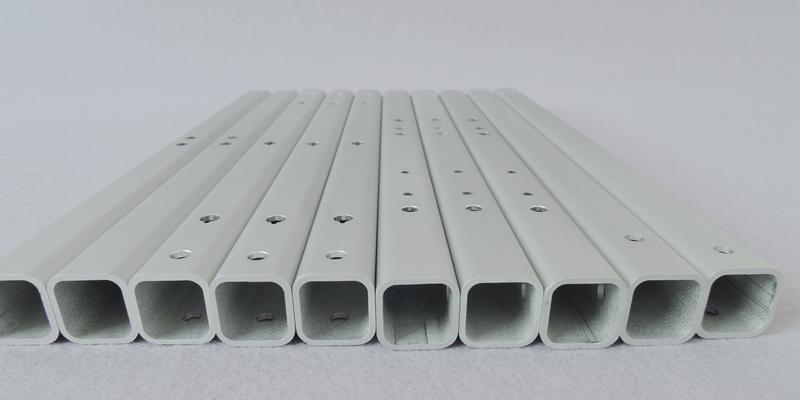- March 10, 2023
Aluminum alloys are among the most versatile and effective materials for designing products for use in various industries. This material possesses excellent strength, outstanding resistance to corrosion, heat treatability, good weldability, and formability. Consequently, many manufacturers have resorted to using different types of aluminum alloys in several applications.
Aluminum is available in different grades, each with varying alloying elements and properties. So, you must know the differences between these aluminum alloying grades to choose the right one for your project. This guide explores the aluminum alloy types, their features, benefits, and applications.
What is Aluminum Alloy?
An aluminum alloy is a unique combination of different metal elements with enhanced strength and durability. Aluminum is traditionally lightweight and has excellent corrosion resistance. These alloys are formed by combining aluminum in its liquid/molten form with other elements, which later cools and solidifies, forming a homogeneous solid material. The other elements combined with aluminum to form these alloys may take up to 15 percent of the total mass.
Examples of these added elements include Zinc, Iron, Magnesium, Copper, and Silicon. More importantly, adding these elements to aluminum offers the alloy enhanced electrical conductivity, corrosion resistance, workability, and strength, than pure metallic elements.
Properties of Aluminum
Aluminum has many outstanding properties, making it famous and commonly used in most applications. Here are some of them:
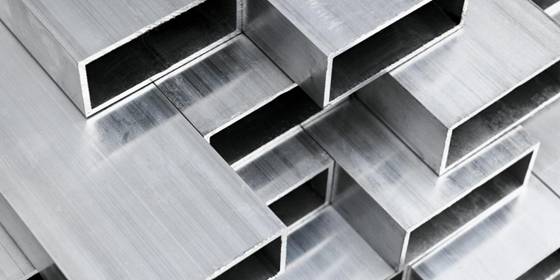
Corrosion Resistance
Aluminum produces a natural thin oxide layer that protects the metal from reacting with the environment. Therefore, it is suitable for several applications where it may be exposed to corrosive agents like vehicles. However, you should note that aluminum alloys have higher corrosion resistance properties than pure aluminum.
Lightweight
The standard weight of aluminum is precisely 2.7 g/cm³, approximately one-third the weight of steel. Its lightweight property helps to reduce its costs of manufacturing significantly. Usually, automobile industries use aluminum in automobiles to reduce weight and increase load capacity. Furthermore, you can adjust the composition of the aluminum alloy types to modify the weight depending on the application.
Electric and Thermal Conductivity
Aluminum is a great conductor of electricity and heat due to its weight. Its level of electric and thermal conductivity is twice that of copper. As a result, it is commonly used for making power transmission lines. Also, it functions as an excellent heat sink/ spreader, making it the ideal choice for appliances that require rapid and swift heat dissipation.
Applications of Aluminum Alloys
Here are some of the most common applications of aluminum alloys.
Aerospace Industry
The aircraft industry often requires lightweight and strong aluminum alloys. These alloys must offer an excellent strength-to-weigh ratio while fitting the budget range perfectly. Likewise, using aluminum grades in aircraft helps to prevent untimely damage to the aircraft due to exposure to unfavorable environmental conditions.
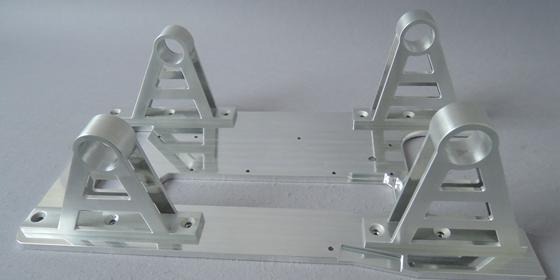
Healthcare Sector
Aluminum products have helped the health industry maintain its high cleanliness and biocompatibility. Several medical instruments, such as surgical and orthopedic, are made with various types of aluminum. Likewise, manufacturers make other general-use pieces of equipment like trays and containers with aluminum.
Automotive Industry
Vehicle manufacturers use aluminum grades to make ideal vehicles lightweight, environmentally friendly, and durable. Manufacturers use different die-cast parts made with aluminum in cars to make them agile and rugged because of the high level of durability and lightweight properties of aluminum alloys.
Electrical and Electronics Engineering
Consumer electronics producers utilize different types of aluminum alloys continuously in making products because of their high heat conductivity. Manufacturers use the excellent heat conductivity of aluminum in making components like cooling components for graphic processors and heat sinks.
How to Identify Aluminum Alloy Grades?
Generally, you can identify an aluminum alloy using a 4-digit identification model. Each digit on the aluminum grades chart represents a different aspect of the alloyed metal and is commonly written before the pure metallic element for clarity’s sake. For example, 5052 Aluminum.
The digits represent separate entities like steel alloy, titanium alloy, or other alloys. Here is a breakdown of the main alloying element each first digit represents:
- “1” means the absence of alloyed elements and that it is pure aluminum
- “2” represents Copper
- “5” represents Magnesium
- “6” represents Magnesium and Silicon
- “7” represents Zinc
- “8” is booked for all other alloying agents
You should note that these numbers can identify the whole aluminum alloy list. For instance, given that “2” denotes Copper, all aluminum copper alloys will be referred to as “2xxx series”.
Further, the second digit signifies any unique alloying conditions and if the alloy has been altered from its original state. However, the digit remains “0” if no special modifications exist. As for the third and fourth digits, they are typically used to serialize and distinguish individual alloys.
A 1xxx series (a pure aluminum consisting of precisely 99% aluminum) while the last two digits denote the minimum aluminum percentage above 99%. For instance, 1060 aluminum contains at least 99.60% pure aluminum.
Different Grades of Aluminum Alloys
Seven different base alloys are pairing available for industrial use between the ranges of 1xxx to 7xxx. Each with a unique digit combination and varying proportions and pairing. Here is the standard aluminum alloys list for industrial use:
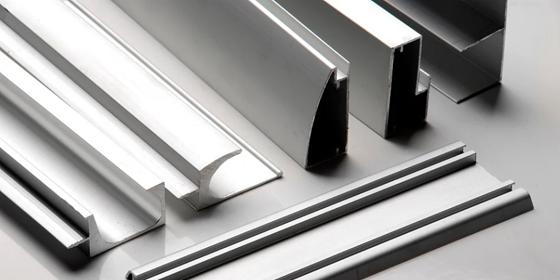
1xxx Series
This alloy class is known as the pure aluminum series because it comprises 99 % or more pure aluminum. These alloys offer precisely 10 to 27 ksi ultimate tensile strength. They are generally weldable but not heat-treatable because they are vulnerable to high temperatures.
These alloys possess excellent electrical and thermal conductivity. Additionally, its excellent resistance to corrosion makes it an ideal choice for making chemical tanks and piping.
2xxx Series
Copper is the primary alloying element in the 2xxx series, with significant proportions of magnesium, manganese, silicon, and other elements. Copper, the primary alloying element of the 2xxx series aluminum grade, has an ultimate tensile strength of 27 to 62 ksi. These grades have high machinability and maintain great strength at a wide temperature margin, making them suitable for the aerospace industry.
Although the 2xxx series alloys are strong and tough, they have a low resistance to corrosion than other aluminum alloy types. As a result, you may consider coating or painting these aluminum alloys to improve their longevity.
3xxx Series
The 3xxx series aluminum grade contains magnesium and manganese as the primary alloying element. It gives the aluminum grade outstanding mechanical strength, which it maintains at a wide range of temperatures than pure aluminum.
These aluminum grades are usually not heat-treatable and have ultimate tensile strength within a range of 16 to 41 ksi. Alloy 3004 is an excellent example of an alloy suitable for packing consumer goods from this class.
4xxx Series
The 4xxx series aluminum grade is the only category comprising heat-treatable and non-heat-treatable aluminum alloys. When added to aluminum, silicon, as the primary alloying element, reduces melting points and improves the fluidity of 4xxx series alloys in their molten/liquid form. Although silicon is naturally non-heat treatable, some silicon alloys contain copper or magnesium, making them respond positively to heat treatment.
5xxx Series
5xxx series have magnesium as its principal alloying element. These aluminum alloy grades are usually very strong, highly corrosion and alkaline resistant, perfect for marine applications, and can be readily welded. Due to their high formability, they are easy to sheet metal stamp, bend, roll form, draw, and spin.
Aluminum 5083 is an excellent example of a 5xxx series aluminum grade commonly used for industrial applications due to its resistance to seawater and various industrial chemicals.
6xxx Series
The 6xxx alloys comprise magnesium and silicon, which form magnesium silicide. These aluminum-grade alloys are highly formable, weldable, and compatible with heat treatment. The 6061 alloy is the most common aluminum alloy in the 6xxx series, with excellent corrosion resistance and good strength. As a result, it is commonly used to create boat and truck frames.
Cast Alloys vs. Wrought Alloys: What're Differences?
Cast alloys and wrought alloys are the major aluminum alloy categories. There are several considerable differences between cast and wrought aluminum alloys.
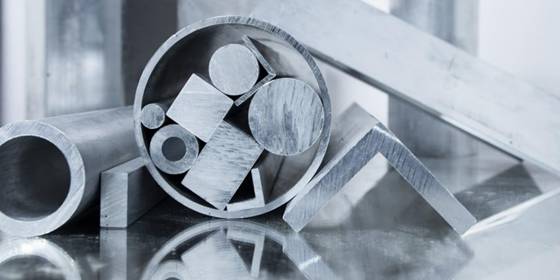
Metal Alloying Elements
Wrought alloys possess fewer other metals than cast alloys. Generally, wrought alloys contain ≤4% of alloying elements compared to >22% of cast alloys. Although this difference seems intangible, it has a more significant effect on the material features of these alloys.
An aluminum alloy’s ductility reduces when other alloying elements are added. It results in the vulnerability of most cast alloys to brittle fracture. On the other hand, you can increase the strength of wrought aluminum alloys, their resistance to corrosion, and conductivity by adding different alloying elements while maintaining their flexibility and other positive qualities.
Fabrication Techniques
Notwithstanding, the most significant difference between these two categories lies in the fabrication technique these alloys undergo before achieving the end product. Cast alloys often exit their mold in a precise solid form as desired.
On the other hand, wrought alloys require various alterations while in their solid form. As a result, the difference in their fabrication often significantly affects the end products’ possible forms and physical characteristics.
Properties
Cast aluminum alloys have lower melting points and tensile strength than wrought aluminum. The aluminum-silicon is the most widely used aluminum alloy due to its high silicon concentration, allowing it to be cast easily. Wrought aluminum has a higher amount of application, and manufacturers make products through aluminum extrusion or rolling.
Common Types of Aluminum Alloy Used in Machining
This section discusses the various types of aluminum alloys you can use in machining your products.
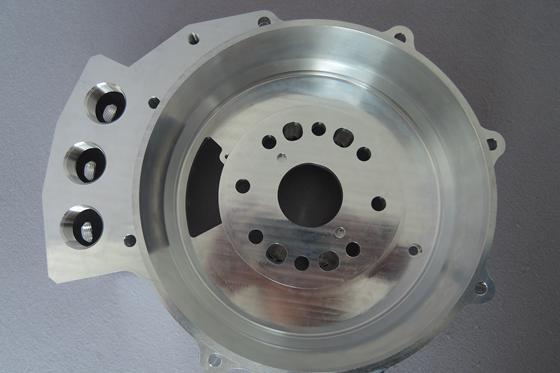
Aluminum 6061
6061 aluminum has silicon and magnesium as its primary elements. It is compatible with various applications due to its strength, corrosion resistance, weldability, and heat treatability. It is well-suited for the extrusion technique, and applying T6 temper helps to make it stronger and more durable. Likewise, it performs well with anodizing for an improved aesthetic finish.
Aluminum 7075
The 7075 aluminum alloy is a strong alloy with excellent strength, similar to steel. Its primary alloying elements are copper and zinc. It finds use in applications requiring excellent strength, such as spacecraft, aircraft, etc. Although not weldable, it is strong, moderately weldable, and capable of withstanding stress.
Aluminum 5052
5052 aluminum is a reliable alloy with excellent resistance to corrosion and moderate strength. It is highly suitable for saltwater applications due to the absence of copper content in the alloy. Marine equipment is the most common part made from the 5052 aluminum. However, the 5052 is from the 5xxx aluminum alloying grade; hence it cannot be heat treated.
Aluminum 6063
6063 aluminum alloy comprises magnesium and silicon and is often referred to as architectural aluminum because of its moderate strength and high ductility. It is highly compatible with die forming. Also, aluminum 6063 is highly corrosion-resistant due to its magnesium-silicide composition.
Some common parts created using 6063 aluminum include architectural products, furniture, pipes, etc. Laser etching aluminum is also compatible with this aluminum grade.
Considerations for Choosing the Right Aluminum Alloy Type
Choosing the suitable aluminum grade for your project is essential for the best results. Here are the key factors to consider before selecting an aluminum alloy.
1. Machinability Rating
The machinability rating of an aluminum alloy lets you know the compatibility status of such material with aluminum CNC machining processes. It would help to note that 6061-T6, 2011 aluminum, and 7075 aluminum are suitable alloys with high to moderate machinability ratings. Hence, you can use these materials to create complex parts with intricate requirements.
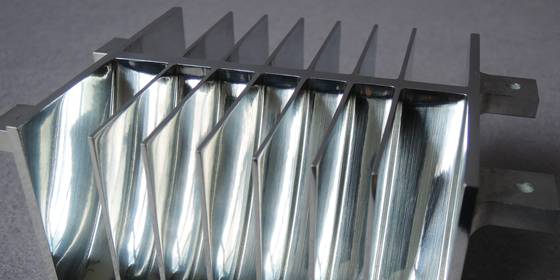
2. Material Costs and Availability
When picking a material for your project, it is essential to consider the costs of the aluminum alloy grade. Maintain an equilibrium between your budget and the cost of the material with the ideal properties for your project. It helps to establish an efficient foundation for your production process.
In addition, the prices of the chosen aluminum grade will decide the availability of the aluminum alloy. A scarce aluminum grade will slow down the manufacturing process. For example, 7075 aluminum offers excellent machinability but has extremely higher costs. On the other hand, 6061 aluminum is much cheaper and has reduced hardness and tensile strength, making it easily machinable.
3. Heat Treatment
Heat treatment involves using extreme heat temperatures to treat aluminum alloys to enhance their strength and durability. Hence, you should find out which aluminum series is heat treatable and which is not.
However, it would help to note that the 2xxx, 6xxx, and 7xxx aluminum alloy series are compatible with heat treatment. You can heat-treat parts made with these alloys to enhance the strength of the finished products.
Get Aluminum Machining Solutions at WayKen
WayKen offers you the best metal and plastics selection guidance for your projects. With multi-axis machining capabilities, we can provide you with aluminum machining solutions in an efficient, cost-effective way. Our experienced experts are ready to assist you to produce high-quality aluminum parts. Don’t hesitate to contact us today, and let’s start your next project.
Conclusion
Aluminum is a commonly used metallic material with versatile properties depending on the element composition. Several types of aluminum alloys have varying properties, making them well-suited for different applications. Thus, it is essential to fully comprehend the differences in these aluminum alloys to choose the ideal material for your projects.
FAQs
Does aluminum alloys rust?
All metallic materials tend to deteriorate in quality over time without proper care. Although aluminum doesn’t rust, there is a high possibility that it corrodes—however, the aluminum oxide layer on its surface help to prevent the material from corrosion.
Which aluminum alloy has better machinability between 6061 and 7075?
6061 aluminum alloy has several advantages over 7075 aluminum when considering their fabrication process. This is because 6061 has reduced hardness and tensile strength making it more machinable than 7075.

